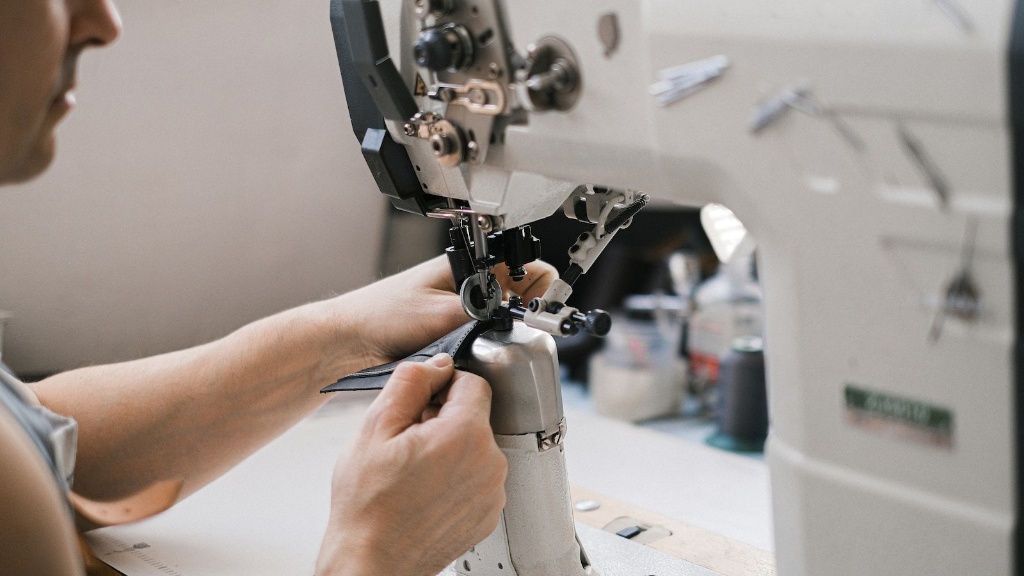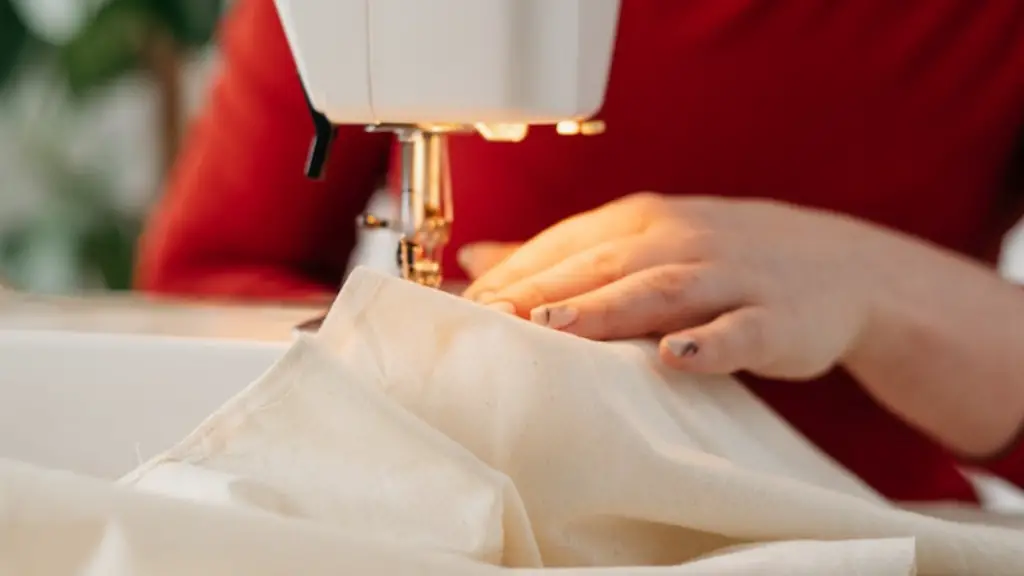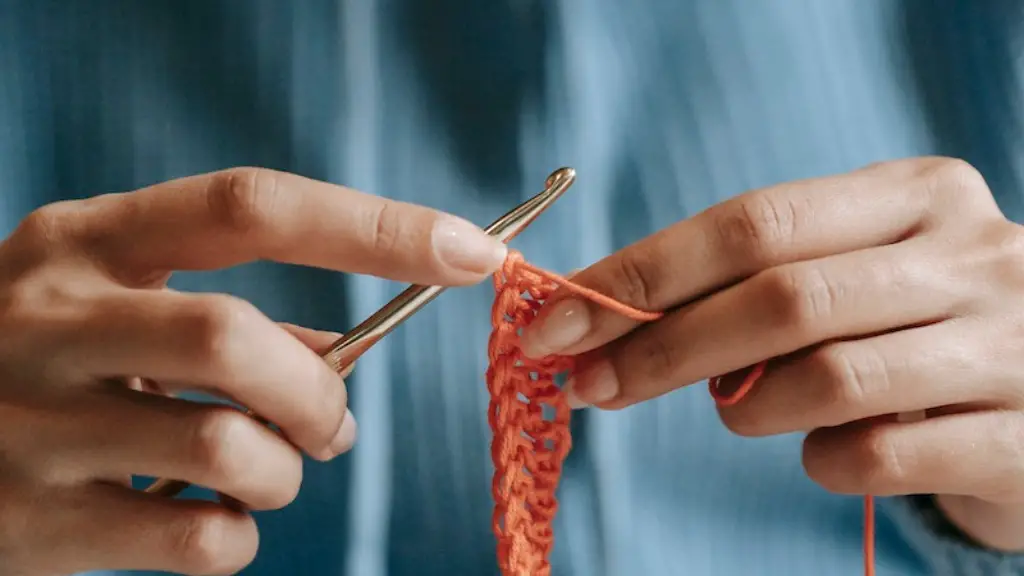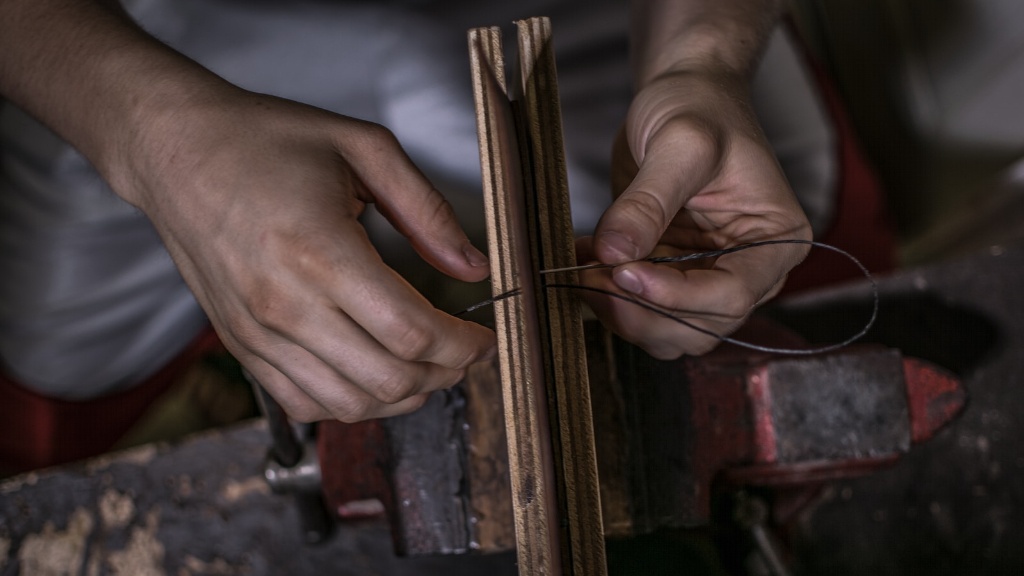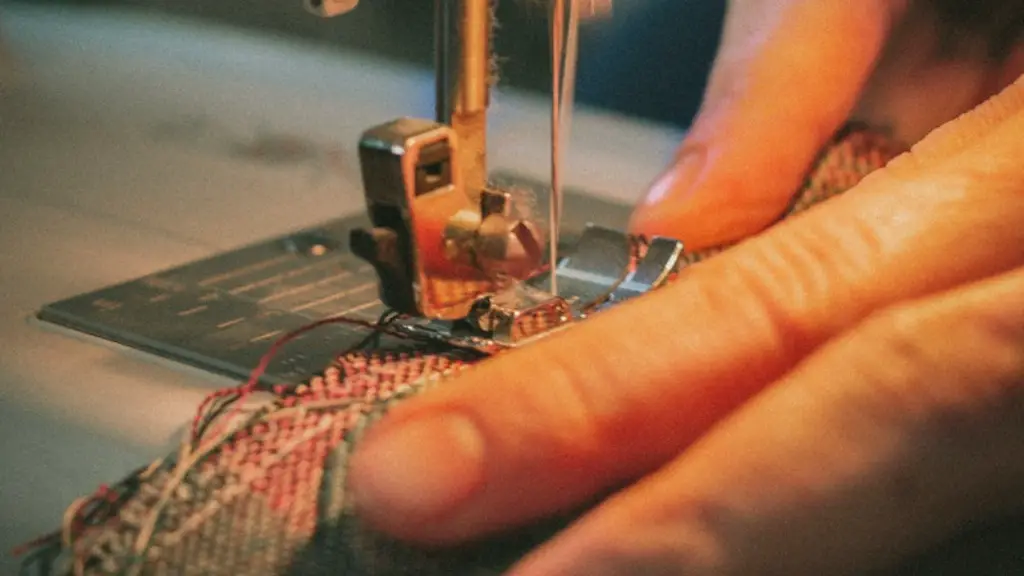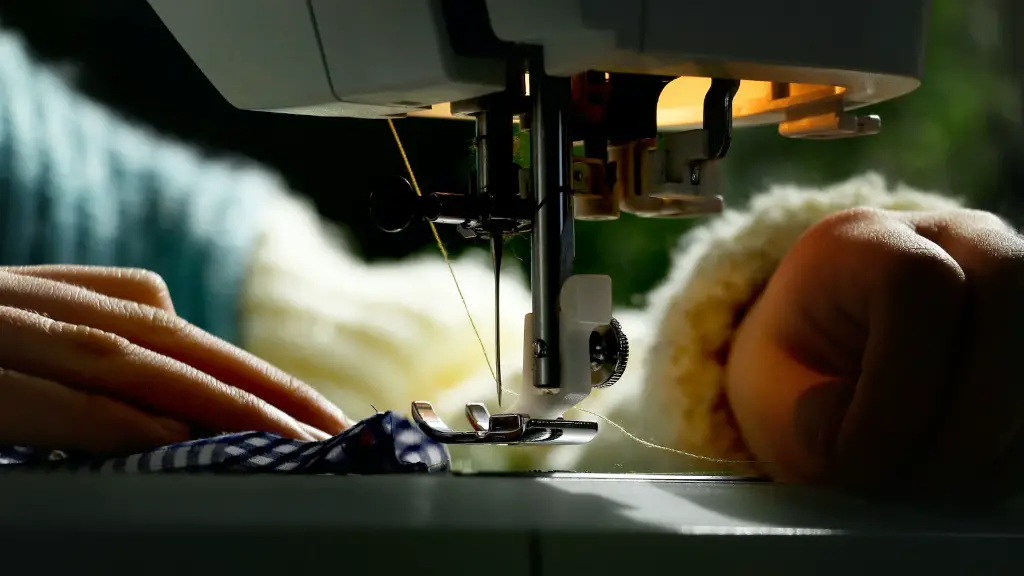Have you ever wanted to make your own napkins from scratch? Making napkins on a sewing machine is an easy and inexpensive way to bring a little extra home-spun charm to your decor. Sewing your own napkins allows you to customize them for any occasion, and can be as simple or detailed as you’d like. Here’s a guide on how to make napkins on a sewing machine, with a few tips and tricks:
Gather Materials
Before you can begin making your napkins, you’ll need to gather your materials. Your materials should include fabric of your choice, scissors, an iron, pins, a sewing machine, thread to match or contrast your chosen fabric, and a measuring tape. You may also want to use an ironing board for maximum convenience.
Your fabric should be considered carefully, as the type of fabric you choose will determine the structure, weight and quality of your finished napkins. All-purpose cotton is the traditional choice for napkins, although linen is also a popular option. Check the care instructions of your fabric as some fabrics may require greater attention when cleaning or ironing. You should also pay close attention to the grain of the fabric and apply it to the napkin in the optimal direction.
Cut and Press
Once your materials are gathered, you can then begin the cutting process. Taking the measurements you need, cut out the fabric to the size and shape you desire. Gently press your fabric pieces with the iron, as this will make sewing your napkins much easier. An added tip is to pre-hem the edges if they will be visible on the finished napkins.
Attach Loops
Debatably the most important part of the napkin making process is attaching the loops for hanging. Cut out the necessary fabric strips for your loops and attach the edges with your chosen method. Attaching loops is usually done with a medium-weight weight interfacing, and is fixed with a running stitch along the edge of the loop.
Attach loops to one corner of each rectangle, so that when finished all four loops are lined up and even. The loops should be about one inch long and about half an inch wide when finished. Check for any hitches and make sure there are no loose threads.
Place Loops Inside
You should now be ready to sew the napkins. Place the right side of your fabric pieces together, matching the edges. Place the sewn loops inside the body of the napkin—placing them in the corner will give them more stability when hung. Pin the edges to ensure that the fabric pieces don’t move.
Sew the Napkins
Now you’re ready to start sewing. Using a straight stitch, sew the fabric pieces together, up to the beginning of the loop. Make sure you sew the two sides together securely, as this will ensure your napkins look polished when complete. Make sure to backstitch at the edges, as this will help make your stitches stronger.
Once you’ve stitched across the napkin, you can then turn the fabric inside out and press the edges. Finally, topstitch the edges and voila—you’re done!
Decorate and Finishing Touches
An optional step is to add any extra embellishments or decorations you like. Consider adding lace or trim to the edges to give your napkins a custom look. Adding a high-grade quilting thread to the loop of each napkin also creates a nice visual effect.
Choose the Correct Thread
Choosing the right thread plays an important role in the quality and strength of your napkin. Regular cotton thread is fine for lighter-weight fabrics, but for heavier fabrics you’ll need to choose a higher-quality thread. Be sure to choose thread in a similar color or texture to the fabric, and opt for a heavier thread for added durability.
Making napkins on your sewing machine is a great way to get creative and add a touch of personal style to your home or event. With a few tips, some materials and a few hours, you can make your own napkins from the comfort of your home.
Level Up Your Stitches
If you want to go the extra mile with your napkins and create a truly impressive finished product, there are a few advanced techniques you can use to level up your look. The most effective stitch is an overlock, which is not only more durable, but also looks neater on the final product. The overlock stitch involves locking two pieces of fabric together in a cascade while creating a neat, decorative stitch.
French seams are also a great way to finish the edges of your napkins and give them a neat appearance, as the thread is hidden from plain sight. A French seam is created by sewing the fabric wrong side out, then turning them inside out and pressing the edges onto each other. This method also creates a sturdier seam and offers more protection against fraying.
Use an Embroidery Machine
Metal and embroidery machines are great tools to use when making napkins. These machines are able to stitch complex designs like logos or monograms onto fabric, adding an extra touch of elegance to already beautiful napkins. Embroidery machines can also embroider writing and intricate designs, the possibilities are truly endless.
Embroidery machines are a useful tool for getting creative and adding a personal touch to your finished napkins. Remember to always use thread that matches or contrasts your chosen fabric, and opt for a heavier thread for added durability.
Take Precautions For Safety
Although making and sewing napkins is usually quick, straightforward and mostly enjoyable, some accidents can occur. Precautions must be taken to ensure your safety and the safety of others. Always make sure to read the instructions for the specific sewing machine you are using and follow safety protocols.
Always ensure the electric plug fits snugly into the socket and never sew over any electric cords. Ensure your hands are kept away from the needles at all times, as they can be extremely sharp. Before you start sewing, adjust the presser foot and the tension to the instructions of your sewing machine. Lastly, never leave the sewing machine unattended.
Storage and Care
When aprons are complete, it’s important to wash and iron them before use. Take extra care to wash them in cold water in order to preserve the original look and feel of the fabric. As some fabrics may require extra attention like dry-cleaning or ironing on a low setting, it’s important to read the care instructions thoroughly. Once your napkins are done laundering and ironing, it’s time to put them away in a secure place.
You can choose to store them by hanging them in your laundry room or you can fold them and place them in a linen cupboard. It’s best to hang them folded in thirds on a rail so that the loops are visible and accessible to hang when required. With the correct storage, you can ensure the napkins will last a long time.
Tailoring Your Napkins
While making napkins on a sewing machine can seem intimidating at first, with these simple instructions you should be able to make your own unique creations. If you are feeling daring and would like to tailor your napkins to an even greater degree, you can use specialized attachments and embellishments, like lace or trim. With the right materials and a few hours, you can easily make napkins that will impress your guests.
Explore Color and Combinations
You can also get creative with color combinations when making napkins. Choosing complimentary colors can help make each napkin stand out, and will generate a sense of visual appeal when placed on the dinner table. Alternatively, consider using monochromatic colors to bring cohesion and unity to the event. Whichever color scheme you decide to use, stick to the same hues for a consistent effect.
Reuse and Repurpose
If you’re looking for an easier alternative, you can always choose to buy pre-made napkins or repurpose second-hand items. To repurpose napkins, all you need to do is place the right sides of fabric pieces back to back and repurpose hem the edges. This is a quick and inexpensive way to create napkins that look like new. Reusing existing napkins is also an eco-friendly way to conserve resources.
Choose the Right Method
Although making napkins on a sewing machine is a popular choice, there are other ways to create unique napkins. If you’re short on time, you can always opt for no-sew napkins, which involves services like fusing or gluing the edges together. This is an easy and affordable option for those who don’t own a sewing machine.
Alternatively, you can use a no-machine method like dying to create your napkins. You can find many tutorials online that offer step-by-step instructions on how to use dying to achieve a unique and creative look. Whichever method you pick, making napkins on a sewing machine is a simple and enjoyable way to create unique napkins for any event.
